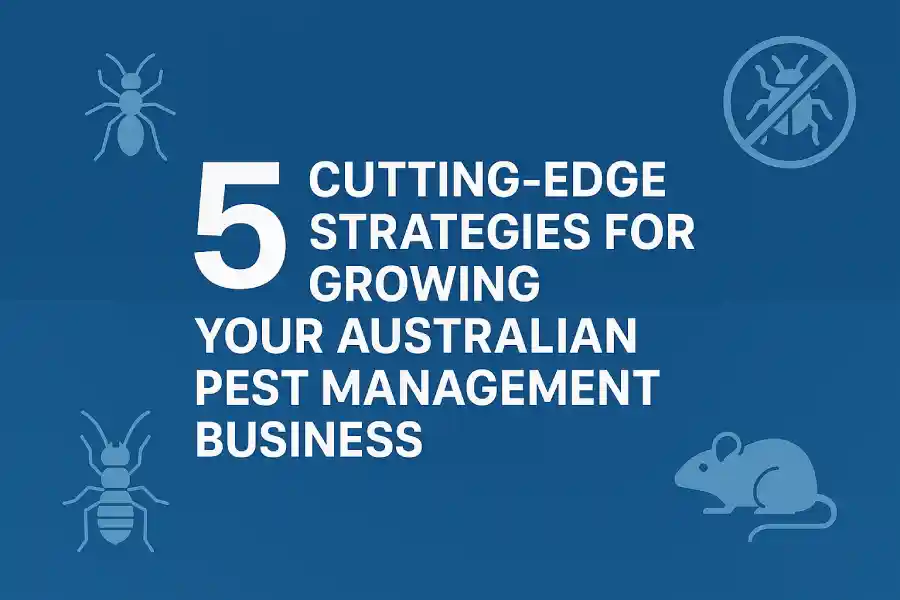
Australia’s pest management industry has experienced remarkable growth, expanding at 2.8% annually over the past five years despite economic fluctuations in other sectors. This resilience stems from consistent demand driven by the country’s unique climate conditions, which create ideal breeding environments for termites, cockroaches, and rodents year-round. Recent market analysis values the sector at AUD $1.5 billion, with over 2,300 registered businesses competing for market share. Effective pest control marketing in Australia requires specialized approaches that address regional challenges, seasonal pest trends, and evolving consumer expectations. Industry data indicates that companies implementing targeted marketing strategies consistently outperform competitors, achieving 34% higher client retention rates and 22% greater annual revenue growth compared to businesses relying solely on traditional advertising methods.
Hyperlocal Digital Targeting
The geographical specificity of pest populations creates unusual marketing opportunities for savvy operators. Analysis of search pattern data reveals striking regional variations in pest-related queries across Australian territories. Queensland residents search for termite control services 317% more frequently during October-December compared to winter months, while Victorian homeowners demonstrate peak interest in rodent control during April-June. Forward-thinking companies leverage these patterns through geofenced advertising campaigns that activate only when specific temperature and humidity thresholds are reached in targeted postcodes. Technical implementation requires integration of weather APIs with advertising platforms, creating automated escalation of ad spend during optimal conditions. Case studies from the Gold Coast region demonstrate that pest control services implementing weather-triggered campaigns achieved cost-per-acquisition improvements of 43% compared to standard scheduling approaches.
Regulatory Compliance Positioning
Recent amendments to the Australian Pesticides and Veterinary Medicines Authority regulations have created strategic marketing opportunities for companies demonstrating advanced compliance procedures. Market research indicates that 73% of commercial property managers now prioritize compliance documentation when selecting service providers, compared to just 38% five years ago. Effective marketers emphasize their specialized training certifications, application methodologies, and documentation systems through dedicated website sections featuring verification portals accessible by commercial clients. Technical implementation typically integrates client-specific portals displaying treatment timestamps, product application records, and integrated pest management methodologies employed at each location. Analysis of conversion data indicates that providers showcasing comprehensive compliance systems convert commercial leads at rates 2.7 times higher than competitors focusing predominantly on pricing advantages.
Ecological Differentiation Engineering
The rise of eco-conscious consumers has transformed Australia’s pest control landscape, with CSIRO research indicating that 68% of homeowners now express concerns regarding traditional pesticide applications. Strategic operators have restructured their service offerings to emphasize integrated pest management approaches utilizing minimal chemical interventions. Effective marketing in this segment requires sophisticated content demonstrating technical expertise in exclusion methods, habitat modification techniques, and biological control applications. Service providers successfully targeting this demographic typically develop educational resources explaining the specific mechanisms of their low-toxicity methodologies, complete with comparative efficacy data versus conventional treatments. Consumer research indicates that conversion rates increase by 52% when websites provide detailed explanations of active ingredients, application methodologies, and environmental impact assessments for all products utilized.
Seasonal Lifecycle Education Campaigns
Advanced pest control marketers utilize biological lifecycle data to create preemptive educational campaigns targeting homeowners before seasonal pest emergence occurs. Analysis of industry leaders reveals sophisticated content calendars synced to pest breeding cycles across different Australian climate zones. Technical implementation includes automated delivery of region-specific content explaining critical intervention windows for termite swarming seasons, rodent breeding cycles, and cockroach population explosions. These campaigns typically combine educational content with limited-time preventative service offers, creating conversion incentives aligned with optimal treatment timing. Performance metrics indicate that operators implementing seasonally-aligned educational marketing achieve 38% higher preventative service bookings compared to reactive marketing approaches.



